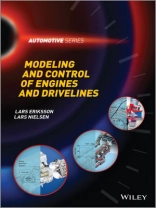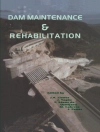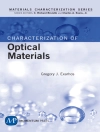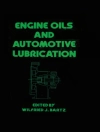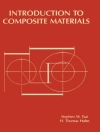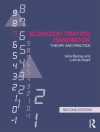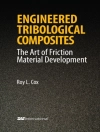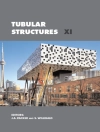Control systems have come to play an important role in the performance of modern vehicles with regards to meeting goals on low emissions and low fuel consumption. To achieve these goals, modeling, simulation, and analysis have become standard tools for the development of control systems in the automotive industry.
Modeling and Control of Engines and Drivelines provides an up-to-date treatment of the topic from a clear perspective of systems engineering and control systems, which are at the core of vehicle design.
This book has three main goals. The first is to provide a thorough understanding of component models as building blocks. It has therefore been important to provide measurements from real processes, to explain the underlying physics, to describe the modeling considerations, and to validate the resulting models experimentally. Second, the authors show how the models are used in the current design of control and diagnosis systems. These system designs are never used in isolation, so the third goal is to provide a complete setting for system integration and evaluation, including complete vehicle models together with actual requirements and driving cycle analysis.
Key features:
- Covers signals, systems, and control in modern vehicles
- Covers the basic dynamics of internal combustion engines and drivelines
- Provides a set of standard models and includes examples and case studies
- Covers turbo- and super-charging, and automotive dependability and diagnosis
- Accompanied by a web site hosting example models and problems and solutions
Modeling and Control of Engines and Drivelines is a comprehensive reference for graduate students and the authors’ close collaboration with the automotive industry ensures that the knowledge and skills that practicing engineers need when analysing and developing new powertrain systems are also covered.
Tabella dei contenuti
Preface xvii
Series Preface xix
Part I VEHICLE – PROPULSION FUNDAMENTALS
1 Introduction 3
1.1 Trends 4
1.1.1 Energy and Environment 4
1.1.2 Downsizing 4
1.1.3 Hybridization 6
1.1.4 Driver Support Systems and Optimal Driving 6
1.1.5 Engineering Challenges 8
1.2 Vehicle Propulsion 8
1.2.1 Control Enabling Optimal Operation of Powertrains 9
1.2.2 Importance of Powertrain Modeling and Models 10
1.2.3 Sustainability of Model Knowledge 11
1.3 Organization of the Book 11
2 Vehicle 15
2.1 Vehicle Propulsion Dynamics 15
2.2 Driving Resistance 16
2.2.1 Aerodynamic Drag 17
2.2.2 Cooling Drag and Active Air-Shutters 18
2.2.3 Air Drag When Platooning 19
2.2.4 Rolling Resistance – Physical Background 20
2.2.5 Rolling Resistance–Modeling 21
2.2.6 Wheel Slip (Skid) 24
2.2.7 Rolling Resistance – Including Thermal Modeling 25
2.2.8 Gravitation 27
2.2.9 Relative Size of Components 28
2.3 Driving Resistance Models 28
2.3.1 Models for Driveline Control 29
2.3.2 Standard Driving Resistance Model 30
2.3.3 Modeling for Mission Analysis 31
2.4 Driver Behavior and Road Modeling 32
2.4.1 Simple Driver Model 32
2.4.2 Road Modeling 33
2.5 Mission Simulation 34
2.5.1 Methodology 34
2.6 Vehicle Characterization/Characteristics 34
2.6.1 Performance Measures 35
2.7 Fuel Consumption 36
2.7.1 Energy Density Weight 36
2.7.2 From Tank to Wheel – Sankey Diagram 37
2.7.3 Well-to-Wheel Comparisons 38
2.8 Emission Regulations 39
2.8.1 US and EU Driving Cycles and Regulations 39
3 Powertrain 45
3.1 Powertrain Architectures 45
3.1.1 Exhaust Gas Energy Recovery 47
3.1.2 Hybrid Powertrains 47
3.1.3 Electrification 48
3.2 Vehicle Propulsion Control 50
3.2.1 Objectives of Vehicle Propulsion Control 50
3.2.2 Implementation Framework 51
3.2.3 Need for a Control Structure 52
3.3 Torque-Based Powertrain Control 52
3.3.1 Propagation of Torque Demands and Torque Commands 52
3.3.2 Torque-Based Propulsion Control – Driver Interpretation 54
3.3.3 Torque-Based Propulsion Control – Vehicle Demands 55
3.3.4 Torque-Based Propulsion Control – Driveline management 55
3.3.5 Torque-Based Propulsion Control – Driveline–Engine Integration 55
3.3.6 Handling of Torque Requests – Torque Reserve and Interventions 56
3.4 Hybrid Powertrains 58
3.4.1 ICE Handling 58
3.4.2 Motor Handling 59
3.4.3 Battery Management 59
3.5 Outlook and Simulation 60
3.5.1 Simulation Structures 60
3.5.2 Drive/Driving Cycle 60
3.5.3 Forward Simulation 61
3.5.4 Quasi-Static Inverse Simulation 61
3.5.5 Tracking 61
3.5.6 Inverse Dynamic Simulation 62
3.5.7 Usage and Requirements 64
3.5.8 Same Model Blocks Regardless of Method 65
Part II ENGINE – FUNDAMENTALS
4 Engine – Introduction 69
4.1 Air, Fuel, and Air/Fuel Ratio 69
4.1.1 Air 69
4.1.2 Fuels 70
4.1.3 Stoichiometry and (A/F) Ratio 71
4.2 Engine Geometry 73
4.3 Engine Performance 74
4.3.1 Power, Torque, and Mean Effective Pressure 74
4.3.2 Efficiency and Specific Fuel Consumption 75
4.3.3 Volumetric Efficiency 76
4.4 Downsizing and Turbocharging 77
4.4.1 Supercharging and Turbocharging 78
5 Thermodynamics and Working Cycles 81
5.1 The Four-Stroke Cycle 81
5.1.1 Important Engine Events in the Cycle 84
5.2 Thermodynamic Cycle Analysis 85
5.2.1 Ideal Models of Engine Processes 86
5.2.2 Derivation of Cycle Efficiencies 89
5.2.3 Gas Exchange and Pumping Work 91
5.2.4 Residual Gases and Volumetric Efficiency for Ideal Cycles 93
5.3 Efficiency of Ideal Cycles 98
5.3.1 Load, Pumping Work, and Efficiency 99
5.3.2 (A/F) Ratio and Efficiency 100
5.3.3 Differences between Ideal and Real Cycles 103
5.4 Models for In-Cylinder Processes 105
5.4.1 Single-Zone Models 105
5.4.2 Heat Release and Mass Fraction Burned Analysis 107
5.4.3 Characterization of Mass Fraction Burned 109
5.4.4 More Single-Zone Model Components 111
5.4.5 A Single-zone Cylinder Pressure Model 113
5.4.6 Multi-zone Models 114
5.4.7 Applications for Zero-dimensional Models 117
6 Combustion and Emissions 119
6.1 Mixture Preparation and Combustion 119
6.1.1 Fuel Injection 119
6.1.2 Comparing the SI and CI Combustion Process 120
6.2 SI Engine Combustion 121
6.2.1 SI Engine Cycle-to-Cycle Variations 121
6.2.2 Knock and Autoignition 122
6.2.3 Autoignition and Octane Number 124
6.3 CI Engine Combustion 126
6.3.1 Autoignition and Cetane Number 126
6.4 Engine Emissions 128
6.4.1 General Trends for Emission Formation 128
6.4.2 Pollutant Formation in SI Engines 130
6.4.3 Pollutant Formation in CI Engines 134
6.5 Exhaust Gas Treatment 137
6.5.1 Catalyst Efficiency, Temperature, and Light-Off 137
6.5.2 SI Engine Aftertreatment, TWC 139
6.5.3 CI Engine Exhaust Gas Treatment 140
6.5.4 Emission Reduction and Controls 142
Part III ENGINE – MODELING AND CONTROL
7 Mean Value Engine Modeling 145
7.1 Engine Sensors and Actuators 146
7.1.1 Sensor, System, and Actuator Responses 146
7.1.2 Engine Component Modeling 149
7.2 Flow Restriction Models 149
7.2.1 Incompressible Flow 151
7.2.2 Compressible Flow 154
7.3 Throttle Flow Modeling 156
7.3.1 Throttle Area and Discharge Coefficient 157
7.4 Mass Flow Into the Cylinders 159
7.4.1 Models for Volumetric Efficiency 159
7.5 Volumes 162
7.6 Example – Intake Manifold 166
7.7 Fuel Path and (A/F) Ratio 168
7.7.1 Fuel Pumps, Fuel Rail, Injector Feed 168
7.7.2 Fuel Injector 169
7.7.3 Fuel Preparation Dynamics 171
7.7.4 Gas Transport and Mixing 174
7.7.5 A/F Sensors 174
7.7.6 Fuel Path Validation 178
7.7.7 Catalyst and Post-Catalyst Sensor 178
7.8 In-Cylinder Pressure and Instantaneous Torque 180
7.8.1 Compression Asymptote 180
7.8.2 Expansion Asymptote 182
7.8.3 Combustion 183
7.8.4 Gas Exhange and Model Compilation 184
7.8.5 Engine Torque Generation 184
7.9 Mean Value Model for Engine Torque 186
7.9.1 Gross Indicated Work 187
7.9.2 Pumping Work 190
7.9.3 Engine Friction 190
7.9.4 Time Delays in Torque Production 192
7.9.5 Crankshaft Dynamics 193
7.10 Engine-Out Temperature 193
7.11 Heat Transfer and Exhaust Temperatures 196
7.11.1 Temperature Change in a Pipe 196
7.11.2 Heat Transfer Modes in Exhaust Systems 197
7.11.3 Exhaust System Temperature Models 197
7.12 Heat Exchangers and Intercoolers 203
7.12.1 Heat Exchanger Modeling 204
7.13 Throttle Plate Motion 206
7.13.1 Model for Throttle with Throttle Servo 210
8 Turbocharging Basics and Models 211
8.1 Supercharging and Turbocharging Basics 211
8.2 Turbocharging Basic Principles and Performance 214
8.2.1 Turbochargers in Mean Value Engine Models 214
8.2.2 First Law Analysis of Compressor Performance 216
8.2.3 First Law Analysis of Turbine Performance 218
8.2.4 Connecting the Turbine and Compressor 219
8.2.5 Intake Air Density Increase 219
8.3 Dimensional Analysis 220
8.3.1 Compressible Fluid Analysis 221
8.3.2 Model Structure with Corrected Quantities 223
8.4 Compressor and Turbine Performance Maps 223
8.4.1 The Basic Compressor Map 223
8.4.2 The Basic Turbine Map 225
8.4.3 Measurement Procedures for determining Turbo Maps 226
8.4.4 Turbo Performance Calculation Details 227
8.4.5 Heat Transfer and Turbine Efficiency 230
8.5 Turbocharger Models and Parametrizations 232
8.5.1 Map Interpolation Models 232
8.6 Compressor Operation and Modeling 232
8.6.1 Physical Modeling of a Compressor 233
8.6.2 Compressor Efficiency Models 237
8.6.3 Compressor Flow Models 239
8.6.4 Compressor Choke 241
8.6.5 Compressor Surge 244
8.7 Turbine Operation and Modeling 249
8.7.1 Turbine Mass Flow 249
8.7.2 Turbine Efficiency 252
8.7.3 Variable Geometry Turbine 253
8.8 Transient Response and Turbo Lag 254
8.9 Example – Turbocharged SI Engine 255
8.10 Example – Turbocharged Diesel Engine 257
9 Engine Management Systems – An Introduction 263
9.1 Engine Management System (EMS) 263
9.1.1 EMS Building Blocks 264
9.1.2 System for Crank and Time-Based Events 265
9.2 Basic Functionality and Software Structure 266
9.2.1 Torque Based Structure 266
9.2.2 Special Modes and Events 267
9.2.3 Automatic Code Generation and Information Exchange 267
9.3 Calibration and Parameter Representation 267
9.3.1 Engine Maps 268
9.3.2 Model-Based Development 270
10 Basic Control of SI Engines 271
10.1 Three Basic SI Engine Controllers 272
10.1.1 Production System Example 273
10.1.2 Basic Control Using Maps 274
10.1.3 Torque, Air Charge, and Pressure Control 275
10.1.4 Pressure Set Point from Simple Torque Model 275
10.1.5 Set Points from Full Torque Model 276
10.1.6 Pressure Control 277
10.2 Throttle Servo 279
10.2.1 Throttle Control Based on Exact Linearization 280
10.3 Fuel Management and Control 282
10.3.1 Feedforward and Feedback Control Structure 283
10.3.2 Feedforward Control with Basic Fuel Metering 283
10.3.3 Feedback Control 284
10.3.4 Fuel Dynamics and Injector Compensation 289
10.3.5 Observer Based Control and Adaption 290
10.3.6 Dual and Triple Sensor Control 293
10.4 Other Factors that Influence Control 294
10.4.1 Full Load Enrichment 295
10.4.2 Engine Overspeed and Overrun 296
10.4.3 Support Systems that Influence Air and Fuel Calculation 296
10.4.4 Cold Start Enrichment 298
10.4.5 Individual Cylinder -control 298
10.5 Ignition Control 299
10.5.1 Knock Control – Feedback Control 301
10.5.2 Ignition Energy – Dwell Time Control 304
10.5.3 Long-term Torque, Short-term Torque, and Torque Reserve 305
10.6 Idle Speed Control 306
10.7 Torque Management and Idle Speed Control 307
10.8 Turbo Control 308
10.8.1 Compressor Anti-surge Control 308
10.8.2 Boost Pressure Control 309
10.8.3 Boost Pressure Control with Gain Scheduling 312
10.8.4 Turbo and Knock Control 314
10.9 Dependability and Graceful Degradation 315
11 Basic Control of Diesel Engines 317
11.1 Overview of Diesel Engine Operation and Control 317
11.1.1 Diesel Engine Emission Trade-Off 318
11.1.2 Diesel Engine Configuration and Basics 319
11.2 Basic Torque Control 320
11.2.1 Feedforward Fuel Control 322
11.3 Additional Torque Controllers 322
11.4 Fuel Control 323
11.4.1 Control signal – Multiple Fuel Injections 324
11.4.2 Control Strategies for Fuel Injection 326
11.5 Control of Gas Flows 327
11.5.1 Exhaust Gas Recirculation (EGR) 328
11.5.2 EGR and Variable Geometry Turbine (VGT) 329
11.6 Case Study: EGR and VGT Control and Tuning 332
11.6.1 Control Objectives 333
11.6.2 System Properties that Guide the Control Design 334
11.6.3 Control Structure 336
11.6.4 PID Parameterization, Implementation, and Tuning 340
11.6.5 Evaluation on European Transient Cycle 343
11.6.6 Summing up the EGR VGT Case Study 346
11.7 Diesel After Treatment Control 346
12 Engine–Some Advanced Concepts 349
12.1 Variable Valve Actuation 349
12.1.1 Valve Profiles 351
12.1.2 Effects of Variable Valve Actuation 352
12.1.3 Other Valve Enabled Functions 354
12.1.4 VVA and Its Implications for Model Based Control 355
12.1.5 A Remark on Air and Fuel Control Strategies 355
12.2 Variable Compression 356
12.2.1 Example – The SAAB Variable Compression Engine 357
12.2.2 Additional Controls 358
12.3 Signal Interpretation and Feedback Control 361
12.3.1 Ion-sense 361
12.3.2 Example – Ion-sense Ignition Feedback Control 365
12.3.3 Concluding Remarks and Examples of Signal Processing 369
Part IV DRIVELINE – MODELING AND CONTROL
13 Driveline Introduction 373
13.1 Driveline 373
13.2 Motivations for Driveline Modeling and Control 373
13.2.1 Principal Objectives and Variables 374
13.2.2 Driveline Control vs. Longitudinal Vehicle Propulsion Control 375
13.2.3 Physical Background 375
13.2.4 Application-driven Background 375
13.3 Behavior without Appropriate Control 376
13.3.1 Vehicle Shuffle, Vehicle Surge 376
13.3.2 Traversing Backlash–shunt and Shuffle 377
13.3.3 Oscillations After Gear Disengagement 377
13.4 Approach 380
13.4.1 Timescales 380
13.4.2 Modeling and Control 380
14 Driveline Modeling 381
14.1 General Modeling Methodology 381
14.1.1 Graphical Scheme of a Driveline 382
14.1.2 General Driveline Equations 382
14.2 A Basic Complete Model – A Rigid Driveline 384
14.2.1 Combining the Equations 385
14.2.2 Reflected Mass and Inertias 386
14.3 Driveline Surge 386
14.3.1 Experiments for Driveline Modeling 386
14.3.2 Model with Driveshaft Flexibility 387
14.4 Additional Driveline Dynamics 391
14.4.1 Influence on Parameter Estimation 391
14.4.2 Character of Deviation in Validation Data 392
14.4.3 Influence from Propeller-shaft Flexibility 393
14.4.4 Parameter Estimation with Springs in Series 394
14.4.5 Sensor Dynamics 395
14.5 Clutch Influence and Backlash in General 396
14.5.1 Model with Flexible Clutch and Driveshaft 396
14.5.2 Nonlinear Clutch and Driveshaft Flexibility 400
14.5.3 Backlash in General 403
14.6 Modeling of Neutral Gear and Open Clutch 404
14.6.1 Experiments 404
14.6.2 A Decoupled Model 405
14.7 Clutch Modeling 406
14.7.1 Clutch Modes 409
14.8 Torque Converter 409
14.9 Concluding Remarks on Modeling 411
14.9.1 A Set of Models 411
14.9.2 Model Support 411
14.9.3 Control Design and Validating Simulations 412
15 Driveline Control 413
15.1 Characteristics of Driveline Control 414
15.1.1 Inclusion in Torque-Based Powertrain Control 414
15.1.2 Consequence of Sensor Locations 415
15.1.3 Torque Actuation 415
15.1.4 Transmissions 416
15.1.5 Engine as Torque Actuator 417
15.1.6 Control Approaches 418
15.2 Basics of Driveline Control 419
15.2.1 State-Space Formulation of the Driveshaft Model 419
15.2.2 Disturbance Description 420
15.2.3 Measurement Description 420
15.2.4 Performance Output 420
15.2.5 Control Objective 421
15.2.6 Controller Structures 421
15.2.7 Notation for Transfer Functions 422
15.2.8 Some Characteristic Feedback Properties 422
15.2.9 Insight from Simplified Transfer Functions 425
15.3 Driveline Speed Control 427
15.3.1 RQV control 427
15.3.2 Formulating the Objective of Anti-Surge Control 429
15.3.3 Speed Control with Active Damping and RQV Behavior 430
15.3.4 Influence from Sensor Location 435
15.3.5 Load Estimation 436
15.3.6 Evaluation of the Anti-Surge Controller 438
15.3.7 Demonstrating Rejection of Load Disturbance 439
15.3.8 Experimental Verification of Anti-Surge Control 440
15.3.9 Experiment Eliminating a Misconception 443
15.4 Control of Driveline Torques 443
15.4.1 Purpose of Driveline Torque Control for Gear Shifting 444
15.4.2 Demonstration of Potential Problems in Torque Control 444
15.4.3 Approaches to Driveline Torque Control for Gear Shifting 447
15.5 Transmission Torque Control 448
15.5.1 Modeling of Transmission Torque 448
15.5.2 Transmission-Torque Control Criterion 452
15.5.3 Gear-shift Condition 452
15.5.4 Final Control Criterion 454
15.5.5 Resulting Behavior–Feasible Active Damping 454
15.5.6 Validating Simulations and Sensor Location Influence 456
15.6 Driveshaft Torsion Control 459
15.6.1 Recalling Damping Control with PID 460
15.6.2 Controller Structure 460
15.6.3 Observer for Driveshaft Torsion 461
15.6.4 Field Trials for Controller Validation 464
15.6.5 Validation of Gear Shift Quality 464
15.6.6 Handling of Initial Driveline Oscillations 466
15.7 Recapitulation and Concluding Remarks 467
15.7.1 General Methodology 467
15.7.2 Valuable Insights 468
15.7.3 Formulation of Control Criterion 468
15.7.4 Validation of Functionality 468
15.7.5 Experimental Verification of Torque Limit Handling 469
15.7.6 Benefits 469
Part V DIAGNOSIS AND DEPENDABILITY
16 Diagnosis and Dependability 473
16.1 Dependability 474
16.1.1 Functional Safety–Unintended Torque 474
16.1.2 Functional Safety Standards 476
16.1.3 Controller Qualification/Conditions/Prerequisites 477
16.1.4 Accommodation of Fault Situations 478
16.1.5 Outlook 478
16.1.6 Connections 479
16.2 Basic Definitions and Concepts 479
16.2.1 Fault and Failure 480
16.2.2 Detection, Isolation, Identification, and Diagnosis 481
16.2.3 False Alarm and Missed Detection 481
16.2.4 Passive or Active (Intrusive) 482
16.2.5 Off-Line or On-Line (On-Board) 482
16.3 Introducing Methodology 482
16.3.1 A Simple Sensor Fault 482
16.3.2 A Simple Actuator Fault 483
16.3.3 Triple Sensor Redundancy 483
16.3.4 Triple Redundancy Using Virtual Sensors 485
16.3.5 Redundancy and Model-Based Diagnosis 486
16.3.6 Forming a Decision–Residual Evaluation 488
16.3.7 Leakage in a Turbo Engine 491
16.4 Engineering of Diagnosis Systems 494
16.5 Selected Automotive Applications 494
16.5.1 Catalyst and Lambda Sensors 495
16.5.2 Throttle Supervision 496
16.5.3 Evaporative System Monitoring 497
16.5.4 Misfire 501
16.5.5 Air Intake 507
16.5.6 Diesel Engine Model 517
16.6 History, Legislation, and OBD 520
16.6.1 Diagnosis of Automotive Engines 520
16.7 Legislation 521
16.7.1 OBDII 521
16.7.2 Examples of OBDII Legislation Texts 523
A Thermodynamic Data and Heat Transfer Formulas 527
A.1 Thermodynamic Data and Some Constants 527
A.2 Fuel Data 528
A.3 Dimensionless Numbers 528
A.4 Heat Transfer Basics 529
A.4.1 Conduction 535
A.4.2 Convection 536
A.4.3 Radiation 537
A.4.4 Resistor Analogy 537
A.4.5 Solution to Fourth-order Equations 539
References 541
Index 555
Circa l’autore
Lars Eriksson is an Associate Professor of Vehicular Systems at Linköping University with main responsibility for the engine control laboratory. Since 1994, he has been working as a researcher in the field of modeling and control of engines and drivelines with research that is performed in close collaboration with industry. This provides good contact with practicing engineers and who are then able to offer their input when new research results are integrated into course curriculums. As a teacher he has developed and taught several courses on this subject, both at the university and for industry. At Linköping University he is responsible for the course “Modeling and Control of Engines and Drivelines” which has been given on the subject since 1998 and he is also a regular lecturer for the module “Basics of SI engine control” on the Powertrain Engineering Programme at IFP School in Paris.
Since 1992, Lars Nielsen has been a Professor of Vehicular Systems holding the Sten Gustafsson chair at Linköping University. His main research interests are in automotive modeling, control, and diagnosis, and he has been active in all aspects of this field during its expansion and growth since the nineties. His supervision has led to thirty graduate exams, in many cases with significant industrial participation. The collaboration aspect has also been strong in his role as center director for two large centers of excellence (ECSEL 1996-2002, LINK-SIC 2010- ). In the international research community, he was the Chairman of Automotive Control within the International Federation of Automatic Control (2002-2005), and then the Chairman of all Transportation and Vehicle Systems (2005-2011). Selected national commissions of trust are Board Member of the Swedish Research Council-NT (2001-2006), and vice chair in IVA II – the electrical engineering division of the Royal Swedish Academy of Engineering (2010-).
